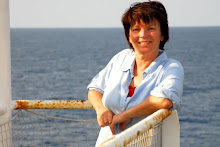In West Africa, the birth defect commonly known as club foot is often thought to be the touch of the devil. The result of that fear is that babies with this problem are ridiculed and shunned, condemned to a dismal future.
Club foot is a condition present from birth in which the foot grows inward. Although the problem is widespread in West Africa, the deformity can be easily reversed by a series of casts developed by Dr. Ignacio Ponseti.
Mercy Ships physicians recommended using the Ponseti method in Africa. In the 2010 Field Service, Dr Frank Haydon directed the Ponseti Treatment Program with CNAO (the national prosthetic/orthotic center) in Lomé, Togo. For the 2011 Field Service in Sierra Leone, Dr. Haydon adapted the program to incorporate long-term sustainability through partnerships with Prosthetic Outreach Foundation (POF), Aberdeen Rehabilitation Centre, Handicap International, and Cure Clubfoot Worldwide. Significant practical training is offered to the existing partnered clinics. This allows for services to continue even after Mercy Ships has left the country.
The training program encompasses all aspects of the treatment – medical, resources, patient care, and sustainability of clinics. Dr Frank Haydon, assisted by Anna Vines, leads Train the Trainer events for local health care professionals. These events are dynamic and interactive – utilizing slideshows, videos, practical demonstrations with props, and group workshops to practice techniques.
The Program delivers theory, resolutions to common issues, and practical techniques. Step one emphasizes the importance of early diagnosis. The main objective is targeting children, 0-2 years old, when the bones are still forming. Early identification minimizes the prevalence of this condition in the adult population and improves the success of ongoing in-country treatment plans.
In the second stage the method of casting is described and practiced during the workshops. The casting phase is usually up to six casts per treatment. During each casting, the baby’s foot is physically manipulated by applying pressure to the corrected foot alignment. This is a gentle technique that does not cause pain for the babies.
Generally the complications are limited to circulation difficulties – a problem that is easily remedied. However, the most common reason for treatment failure is broken casts, so the program strongly addresses ongoing counseling with the babies’ caregivers.
Throughout the training, brainstorming is strongly encouraged. At one event, a topic of discussion involved applying chicken wire as an abrasive material to protect the casts because this can be easily supplied at a low cost.
Step three addresses achillotenotomy, the surgical procedure to sever the Achilles tendon. This is usually performed after the fourth or fifth cast. Each workshop begins with a discussion of sterilization before practicing surgery on a model to identify the “safe triangle” between arteries, nerves and tendons.
The topic of the final stage is the design and use of the Foot Abduction Braces (FAB). This is critical to prevent relapse after the casting phase. The braces were originally invented by Dr. Ignacio Ponseti. However, Dr. Frank Haydon has pioneered the introduction of foot brace molds in West Africa. The soft leather shoes are secured onto a metal bar at specific angles to maintain the correct foot position. For three months the braces are worn 23 hours a day. Afterward, they are worn at night for up to three years. The workshops demonstrate the simple, yet effective, tools to make the shoes.
In order to treat a full schedule of clubfoot patients, clear organizational processes are needed. So, the training program includes fundamental requirements for successful clinic management – setting up a new clinic, assessment of treatment plans, advertising options and patient care advice for the caregivers.
Bambino Suma (Clinical Manager, POF) highlighted the valued of the knowledge shared during the training program, saying, “There are more ideas for the future. It is a very good experience. I was able to see past mistakes and improve my knowledge. There is a higher, new scale of training from this Mercy Ships program.”
Story by Claire Ross
Photos Debra Bell
Friday, June 10, 2011
Subscribe to:
Post Comments (Atom)










































No comments:
Post a Comment
Note: Only a member of this blog may post a comment.